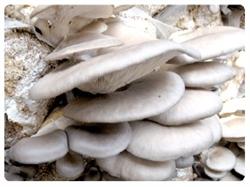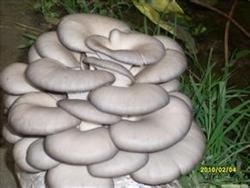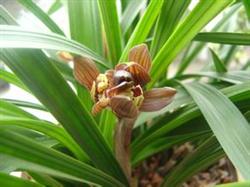Skillful treatment of mixed bacteria of Pleurotus ostreatus covered with sediment

In the cultivation process of Pleurotus ostreatus, various cultivation methods will cause contamination of miscellaneous bacteria to varying degrees, especially in the season of higher temperature. Light will affect output and income, serious will lead to production reduction or even no harvest, resulting in serious economic losses. Many producers encounter this situation are helpless, a large number of germicidal drugs to prevent and control, but the effect is very small, but increase the cost, even lead to the occurrence of phytotoxicity, the loss is heavier. According to various miscellaneous bacteria, such as: Chloromycete, Penicillium, Mucor, Trichoderma, Aspergillus, Rhizopus, white mold, Alternaria rubra and other aerobic, high temperature and high humidity life habits, can adopt the following without drug investment, raw materials can be locally obtained, easy to operate control methods: 1. Cultivation of Pleurotus ostreatus in large beds There are many reasons for pollution caused by cultivation of Pleurotus ostreatus in large beds. First, the reasons for pollution should be found according to different situations (such as sudden high temperature, water inflow in the material, unclean surrounding environment, pests, etc.). Treat differently and eradicate the pollution source. Then treat the contaminated Pleurotus ostreatus as follows: If miscellaneous bacteria occur sporadically on the material surface, it can be controlled by smearing or covering the affected area with concentrated lime slurry. If a large number of miscellaneous bacteria are produced, the river sediment or yellow sediment below 30 cm on the surface can be dug (the underground deep sediment soil is free of pests and diseases), and then crushed, added with 2% lime powder and mixed evenly, the film is removed, and the contaminated part of the material surface is covered with 2~3 cm thick sediment, covering an area slightly larger than the contaminated area, and the sediment is slightly compacted. If the material surface is seriously polluted, the whole bed material surface should be covered, and the film should be washed with disinfectant before coating, and the routine management should be resumed. After a few days, the hyphae will resume growth, and the sediment will soon be full of hyphae, which not only has no effect on the yield of Pleurotus ostreatus, but also has a certain effect on increasing production. Second, the bag cultivation of Pleurotus ostreatus control methods will be contaminated by miscellaneous bacteria bag pick out, choose a higher place to dig a depth of about 60 cm pit (The size of the pit depends on the number of contaminated bacteria bags, and pay attention to no accumulated water in the pit), place the contaminated parts of the bacteria bags downward into the pit (do not take off the bags), fill the soil at a distance of 5 cm, and cover the bags with 25~30 cm thick wet fine soil or wet sediment, so that after 15~20 days of culture, all contaminated bacteria bags will return to normal. After all hyphae grow well, move to the mushroom field to open bags and mushroom, the mushroom rate is basically not affected. If the underground water level of the cultivation site is high, it is not suitable to dig deep pits, only shallow pits of about 20 cm should be dug. After the bacteria bags are arranged according to the above methods, they are covered with wet soil or sediment 20~25 cm thick, and the effect is the same. No matter which method is adopted, film should be covered in rainy days, drainage ditch should be opened around, and no water should be accumulated in the pit. With this method to control miscellaneous bacteria is also applicable to a variety of wood-rotting fungi, may wish to try.
- Prev

Common problems and Solutions of Pleurotus ostreatus in the stage of growing bacteria
In the cultivation of Pleurotus ostreatus; diseases and insect pests stand in the way. Understanding and timely prevention and control are of great significance to normal production. Diseases and insect pests are found; if no timely measures are taken, the yield of Pleurotus ostreatus will be seriously affected, sometimes resulting in no harvest. Therefore, excellent and highly resistant strains should be selected, scientific management should be strengthened, and mushroom growth should be created.
- Next

How to fertilize orchids
Orchids belong to Orchidaceae. They are monocotyledons and perennial herbs. 20-40 cm high, roots long tubular. Leaves clustered from stem, linear-lanceolate, slightly leathery, 2-3 pieces in a bunch. The main results are as follows: (1) the culture of orchid on the balcony is very different from the ground when the matrix is too wet or too dry. The orchid basin on the ground communicates directly with the earth.
Related
- Fuxing push coffee new agricultural production and marketing class: lack of small-scale processing plants
- Jujube rice field leisure farm deep ploughing Yilan for five years to create a space for organic food and play
- Nongyu Farm-A trial of organic papaya for brave women with advanced technology
- Four points for attention in the prevention and control of diseases and insect pests of edible fungi
- How to add nutrient solution to Edible Fungi
- Is there any good way to control edible fungus mites?
- Open Inoculation Technology of Edible Fungi
- Is there any clever way to use fertilizer for edible fungus in winter?
- What agents are used to kill the pathogens of edible fungi in the mushroom shed?
- Rapid drying of Edible Fungi

